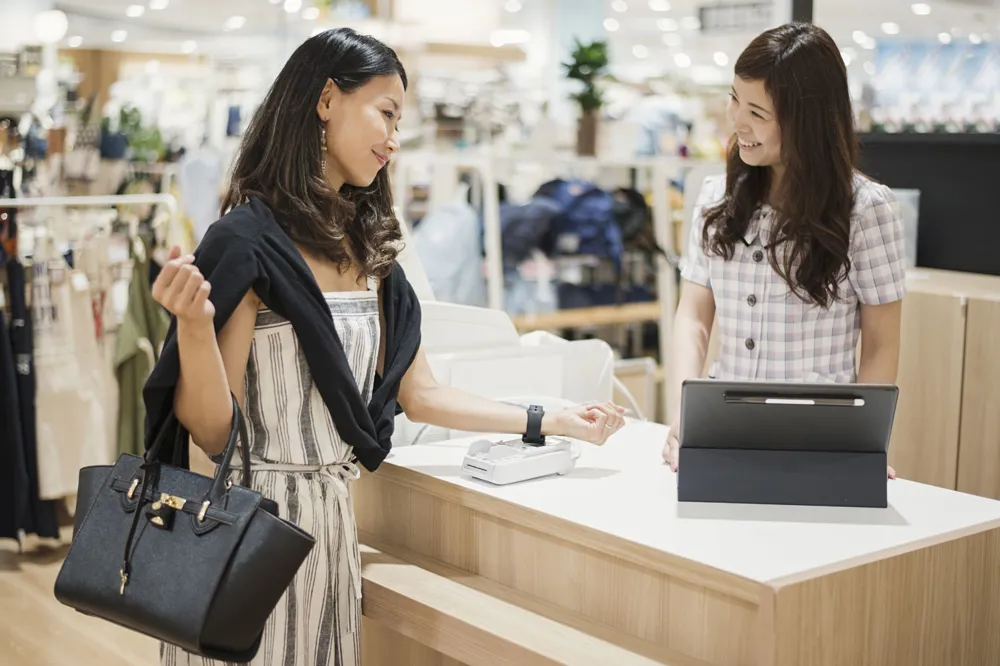Seven Trends Reshaping Smart Retail
May 18, 2022

- Author: Susan Schreiner
In this ‘post-pandemic’ period, retailers need to engage more effectively with customers, build a more resilient and efficient supply chain, and solve for labor shortages and rising workforce costs while generating an ROI.

Retailers and brands are investing in solutions to transform their store operations and deliver a consistent, unified shopping journey from the physical store to e-commerce. These seven trends are enhancing the customer experience.
Omnichannel Strategy
e-commerce will reach 19% of U.S. retail sales by 2024, up from 15% in 2021, according to CB Insights. Retailers are integrating digital tactics to connect with shoppers using text, chat and other mobile platforms. Retailers also are better leveraging the power of data, integrating advanced analytics and AI to improve demand forecasting, service and labor planning, inventory pricing, logistics, personalization and product availability.
Instore Matters
Despite the “online-shift” assumption, 76% of retailers say online stores are expanding their role as experiential and fulfilment hubs, according to IDC’s whitepaper, Transforming a Physical Store for a New Shopping Landscape. Retailers are investing in convenience, personalization, digital connection and a frictionless experience. Best Buy has started to ‘upskill and reskill’ employees to assist with specialized customer services, Target is investing billions expanding into urban areas with smaller stores and sportswear brand Lacoste is aggressively diving into retail with pop-ups and building its largest flagship store in Paris.
Direct to Consumer (D2C)
The D2C trend is causing marketplace realignment strategies by reducing wholesale partners. In March, Sony PlayStation reduced staff due to a ‘global transformation’ of business operations, according to Axios and Nike has reduced its wholesale partners by 50%. Does D2C threaten channels or is it reinventing shopping? Distributors and wholesale partners play an integral role by authenticating a brand and creating distribution sales channels across a larger footprint. Will this tier reinvent itself by becoming integrators?
Infrastructure Agility
Retailers are investing in solutions to increase sales conversion rates by providing a seamless shopping experience. This starts with a personalized consumer journey with discovery to make online buying easy. A cadre of third-party vendors offer services or platforms to cost-effectively help retailers offload certain functions.
SEO
AI-powered search and recommendation engines help suggest relevant products to online shoppers.
Content
Online shoppers expect hyper-relevant content while browsing retailers’ websites. This includes AI-powered chats, livestream and video interactions and recommendations.
Visualization
Online visualization experiences bring physical interactions online or instore using the metaverse and VR/AR. Use-cases range from virtual try-ons of clothes or eyeglasses to visualizing how furniture fits in your home or in L-Ordeal’s case, how make-up transforms your face.
Marketing
Communications platforms-as-a-service balance trust, data collection and privacy. They enable communications channels on websites and apps as well as integrating channels into existing stacks ranging from automated SMS notifications for online orders to in-app voice calls.
Values
Being a trusted brand now entails aligning the brand’s purpose and values with consumers such as Gen Z.
Sustainability
Climate concerns is a strategic issue for companies. For Levi’s, its “Water<Less” program reduces up to 96% of the water used in denim finishing.
Supply Chain Resilience
The pandemic underscored the weaknesses of chasing the lowest-cost manufacturing base evidenced by supply chain issues. Businesses must consider the benefits of closer to or in-market production to have products on shelves when needed.
Operations
Technology enables store efficiencies including returns/recycling and inventory planning. Digital display technology, instore mobile interaction, IoT wireless solutions for tracking, automated and contactless checkout, all play a role.
Delivery
Retailers are exploring in-store robotic fulfillment, micro-fulfillment and on-demand delivery. During the pandemic, retailers implemented new services including curbside pickup, local courier partnerships and timed delivery. Last-mile deliveries soon could be by drones and autonomous vehicles.
The store of the future includes innovative platforms and managed services ripe for collaborations. Technology from third party vendors is the ‘secret sauce’ that enables retailers and brands to be more agile as they reimagine and scale their business models. These forces will help deliver a more resilient, end-to-end, seamless and convenient experience that delivers customers the right product or service at the right time and place.
Join our community of innovators and shape the future of technology.